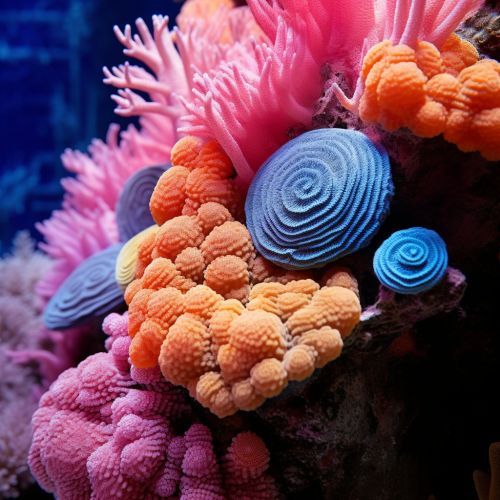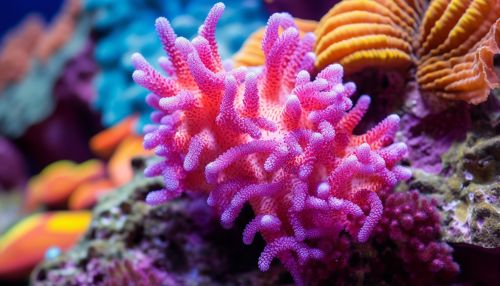Sponges
Introduction
Sponges, also known as Porifera, are a group of simple, multicellular, non-mobile animals that are among the earliest forms of life on Earth. They are characterized by their porous bodies, which are permeated by a network of channels allowing water to circulate through them. Sponges are primarily marine animals, but a small number of species inhabit freshwater environments. They exhibit a wide range of colors, shapes, and sizes, with some species reaching up to 3 meters in height.


Classification
Sponges belong to the phylum Porifera, which is divided into three main classes: Calcarea, Hexactinellida, and Demospongiae. The Calcarea class comprises sponges with a skeleton made entirely of calcium carbonate, while the Hexactinellida class includes glass sponges with a skeleton composed of siliceous spicules. The Demospongiae class, the largest and most diverse, consists of sponges with a skeleton made of siliceous spicules, spongin fibers, or both.
Anatomy and Physiology
Sponges have a simple body structure, lacking true tissues, organs, and a nervous system. Their bodies are composed of two layers of cells, the outer pinacocytes and the inner choanocytes, separated by a gelatinous layer called the mesohyl. The body is perforated by numerous pores, or ostia, through which water enters the sponge. Larger openings, called oscula, serve as exit points for the water.
The choanocytes, or collar cells, are the most characteristic cells of sponges. They have a collar-like ring of microvilli surrounding a single flagellum. The beating of the flagella creates a water current that draws water and food particles into the sponge. The food particles are then trapped by the microvilli and ingested by the choanocytes.
Reproduction
Sponges can reproduce both sexually and asexually. In asexual reproduction, new individuals are formed through budding, fragmentation, or the production of gemmules. Budding involves the growth of a new sponge from an outgrowth of the parent sponge. Fragmentation occurs when a piece of a sponge is broken off and grows into a new individual. Gemmules are resistant structures produced by freshwater sponges to survive unfavorable conditions.
Sexual reproduction in sponges involves the production of eggs and sperm. Most sponge species are hermaphroditic, producing both eggs and sperm, but not at the same time, to avoid self-fertilization. The sperm is often released into the water and captured by other sponges, where it fertilizes the eggs. The fertilized eggs develop into larvae, which are released into the water and eventually settle on a substrate to grow into a new sponge.
Ecology
Sponges play important roles in marine and freshwater ecosystems. They filter large quantities of water, removing bacteria, organic matter, and other particles, thereby contributing to water clarity and nutrient cycling. Sponges also provide habitat for a wide variety of organisms, including bacteria, algae, and small invertebrates.
Sponges have few predators, due to their low nutritional value and the presence of defensive chemicals. However, some species, such as sea turtles, starfish, and certain fish and snails, are known to feed on sponges.
